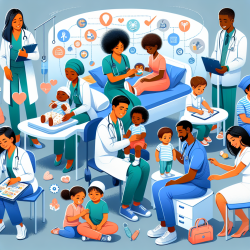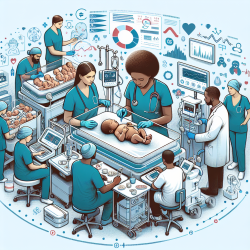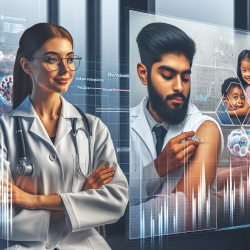Introduction
The COVID-19 pandemic has brought about numerous challenges, not only in healthcare but also in societal structures. One of the less visible but profoundly impactful issues that has surged during this period is intimate partner violence (IPV). As a Special Education Director, I understand the importance of interdisciplinary collaboration in addressing complex issues. Radiologists, often perceived as distant from patient interaction, are uniquely positioned to identify and intervene in cases of IPV, as highlighted in the research article "Addressing intimate partner violence during the COVID-19 pandemic and beyond: how radiologists can make a difference."
Understanding the Role of Radiologists in IPV
Radiologists are integral to the healthcare system, often encountering patients with injuries that may be indicative of IPV. The research emphasizes that radiologists should not only be aware of the common injury patterns associated with IPV, such as fractures in the face, fingers, and upper trunk, but also engage in proactive discussions with referring physicians and patients. This approach can help in identifying IPV cases that might otherwise be treated as routine trauma.
Implementing Research Outcomes
For practitioners looking to enhance their skills and impact in this area, the research suggests several actionable steps:
- Review Medical Histories: Carefully examine patient histories for frequent emergency department visits and injuries that align with IPV patterns.
- Engage in Dialogue: Initiate private conversations with patients when IPV is suspected, ensuring a safe environment for disclosure.
- Collaborate with Care Teams: Work closely with referring physicians and social workers to create a comprehensive support system for IPV victims.
- Educate and Train: Participate in training programs that focus on identifying IPV and understanding the complexities of patient care.
Encouraging Further Research
While the current research provides a strong foundation, there is always room for further exploration. Practitioners are encouraged to delve deeper into understanding the socio-cultural factors influencing IPV, the role of artificial intelligence in identifying IPV patterns, and the development of educational programs that raise awareness among healthcare professionals.
Conclusion
Radiologists have the potential to transform the landscape of IPV identification and support. By stepping beyond the confines of traditional roles and embracing a more patient-centered approach, they can significantly impact the lives of IPV victims. The journey from witness to helper is not just a professional responsibility but a moral imperative in these challenging times.
To read the original research paper, please follow this link: Addressing intimate partner violence during the COVID-19 pandemic and beyond: how radiologists can make a difference.










